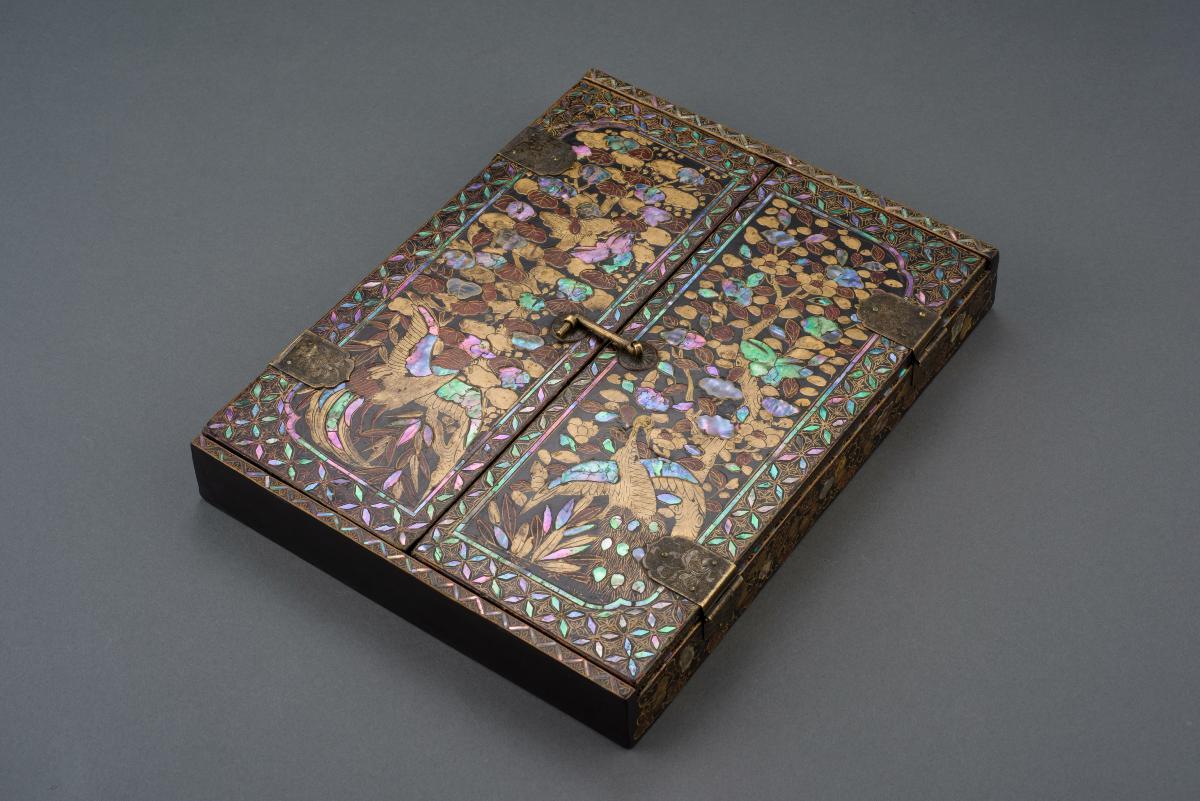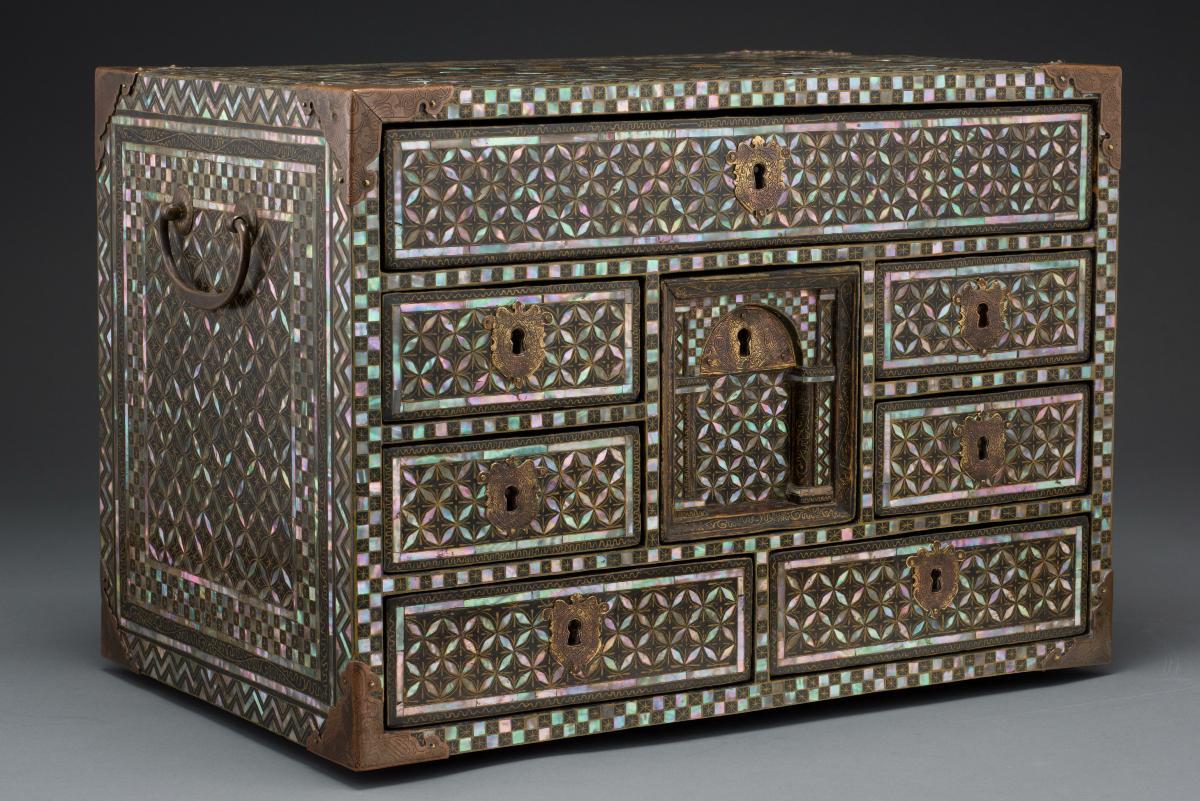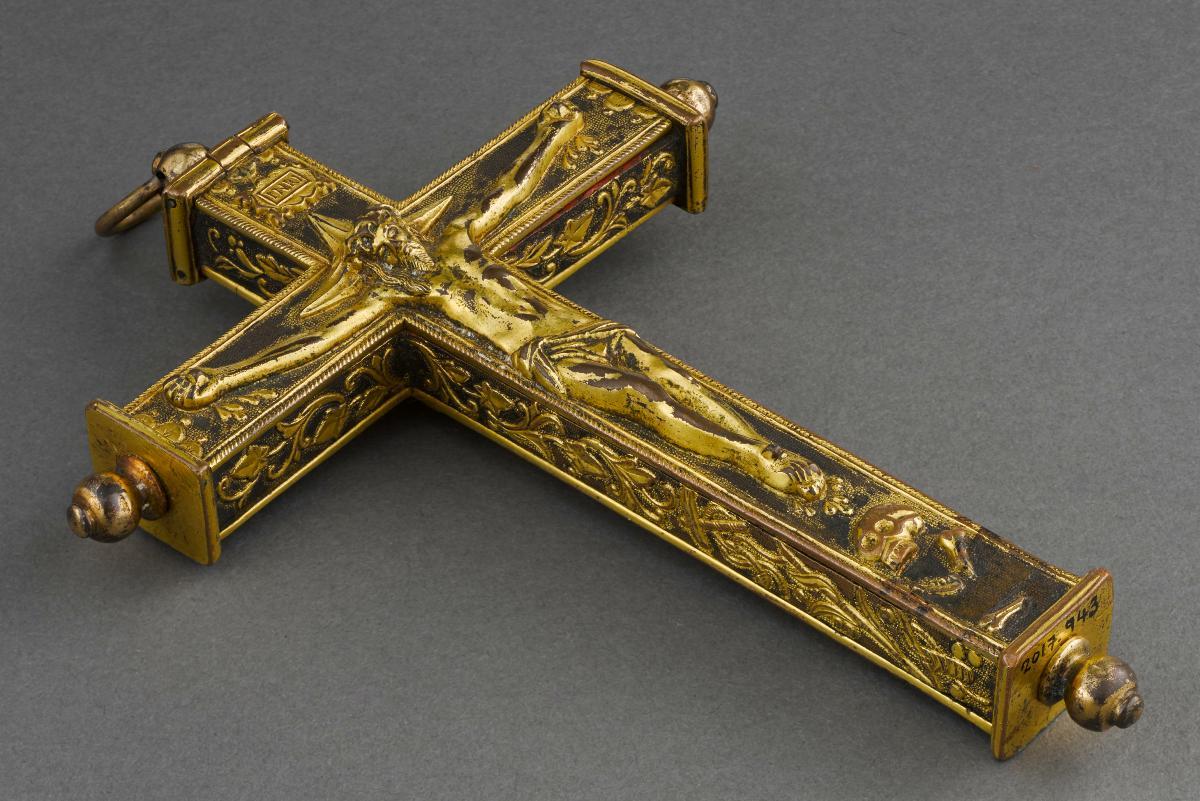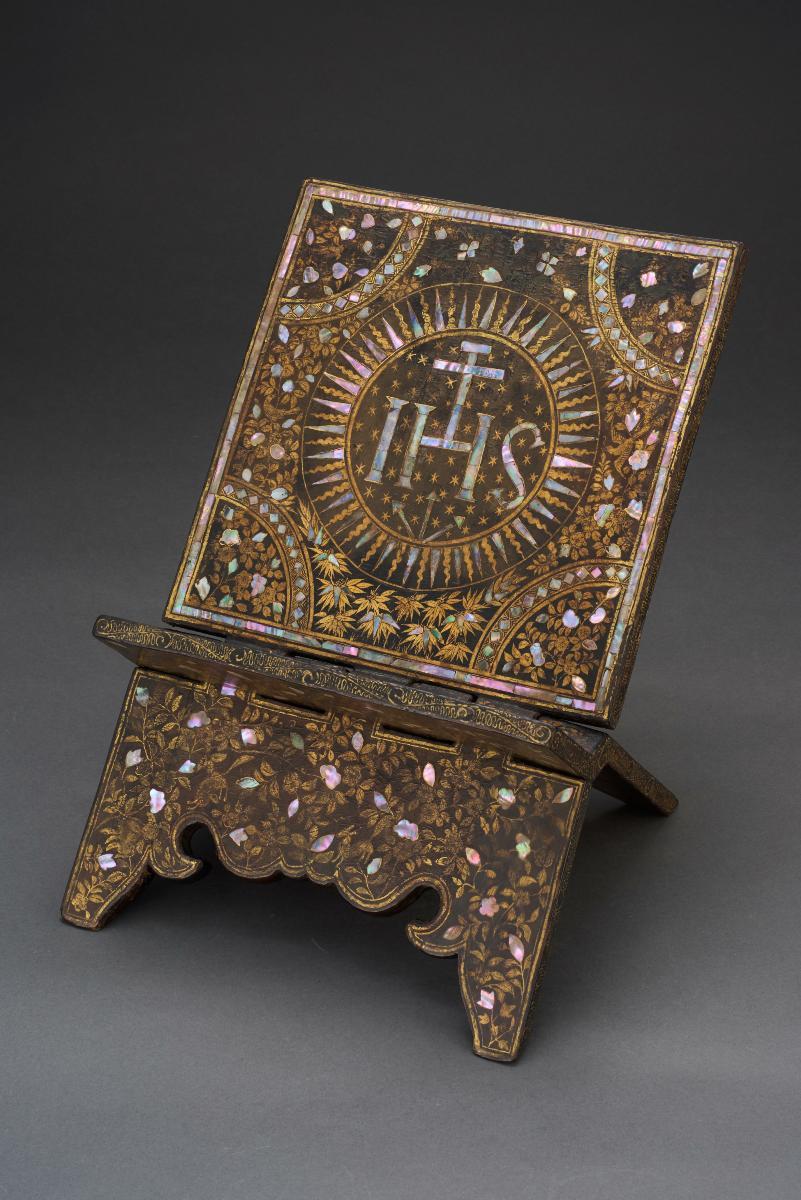The decoration of this portable shrine, probably used for private devotion, combines Japanese lacquer craftsmanship, European Christian subject matter, and the late Mannerist painting style of Spain or Flanders. It is a striking example of interaction of cultures. The crowned Virgin and sleeping Christ Child are flanked by St Joseph and the infant St John the Baptist. The inside and outside of the doors are decorated with Japanese lacquer techniques. Lacquered furniture was one of the most prized Japanese products exported to Europe and Asia. Cabinets, chests, and other objects were decorated in the namban (literally, “foreigners from the south”) style. The term came to be associated with artefacts made for foreigners. The principal customers for namban lacquer were the Portuguese, who first arrived in Japan around 1542, followed by the Spanish and the Dutch.















